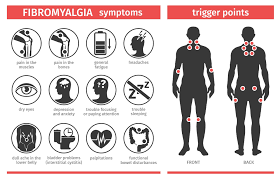Living with fibromyalgia can be challenging due to the chronic pain, fatigue, and stiffness it causes. While medication, such as Pregabalin 300 mg, plays a significant role in managing symptoms, dietary choices can also contribute to symptom relief. By making smart nutritional changes, you can reduce inflammation, boost energy levels, and improve your overall well-being.
💡 Understanding Fibromyalgia and Its Dietary Connection
Fibromyalgia is a chronic condition characterized by widespread musculoskeletal pain, fatigue, and sleep disturbances. Though the exact cause is unknown, inflammation, oxidative stress, and imbalanced neurotransmitters play a role. Diet can help reduce inflammation and support nerve health, making it an effective complementary strategy alongside Pregabalin 300 mg.
🥗 1. Focus on Anti-Inflammatory Foods
Inflammation often worsens fibromyalgia symptoms. Incorporating anti-inflammatory foods can reduce flare-ups and ease pain.
✅ Fruits and Vegetables: Berries, spinach, kale, and broccoli are rich in antioxidants, which help combat inflammation.
✅ Omega-3 Fatty Acids: Fatty fish (salmon, mackerel) and flaxseeds reduce inflammatory markers.
✅ Nuts and Seeds: Almonds, walnuts, and chia seeds provide healthy fats and antioxidants.
By consuming these nutrient-dense foods, you may experience less joint stiffness and muscle discomfort.
🚫 2. Avoid Trigger Foods
Certain foods can worsen fibromyalgia symptoms by promoting inflammation or affecting neurotransmitters. Reducing or eliminating them can make a noticeable difference.
❌ Refined Sugar and Processed Foods: These spike blood sugar levels, leading to energy crashes and increased pain sensitivity.
❌ Gluten: Some fibromyalgia patients report reduced pain and fatigue after following a gluten-free diet.
❌ Artificial Sweeteners: Aspartame may trigger pain by over-stimulating nerve receptors.
🥩 3. Prioritize Protein for Muscle Health
Protein is essential for repairing muscle tissue and reducing muscle fatigue. Including lean proteins in your diet can support fibromyalgia management.
🍗 Lean Meats: Chicken, turkey, and fish provide high-quality protein without excess fat.
🥚 Eggs: Rich in amino acids, which support muscle recovery.
🥜 Legumes and Beans: Plant-based proteins that also contain fiber, aiding digestion.
A protein-rich diet can enhance muscle strength and reduce pain intensity.
💧 4. Stay Hydrated to Combat Fatigue
Dehydration can intensify fatigue and joint pain. Drinking enough water helps flush out toxins, reduces muscle cramping, and improves cellular function.
💦 Tip: Aim for 8–10 glasses of water daily. Add lemon or cucumber slices for extra flavor and nutrients.
🍵 5. Add Magnesium-Rich Foods for Nerve Support
Magnesium plays a crucial role in muscle and nerve function. Increasing magnesium intake may reduce muscle spasms and pain associated with fibromyalgia.
🥬 Leafy Greens: Spinach and Swiss chard are rich in magnesium.
🥜 Nuts and Seeds: Pumpkin seeds and almonds are excellent sources.
🍫 Dark Chocolate: Contains magnesium and antioxidants, but consume in moderation.
🍊 6. Boost Vitamin D for Bone and Muscle Health
Vitamin D deficiency is common in people with fibromyalgia and can worsen pain and fatigue. Getting enough vitamin D through food or supplements may reduce symptoms.
🌞 Fatty Fish: Salmon, mackerel, and tuna are rich in vitamin D.
🥛 Fortified Dairy Products: Milk and yogurt provide both calcium and vitamin D.
🍳 Egg Yolks: A natural source of vitamin D.
🥗 7. Try a Mediterranean Diet for Overall Relief
The Mediterranean diet is rich in fruits, vegetables, healthy fats, and lean proteins, making it an excellent choice for fibromyalgia relief. Studies suggest this diet reduces inflammation and improves energy levels.
🍅 Key Components: Olive oil, whole grains, nuts, and lean meats.
🌿 Benefits: Reduced oxidative stress, better heart health, and less chronic pain.
💊 8. Combine Diet with Medication for Optimal Results
While diet plays a key role in fibromyalgia management, combining it with appropriate medication offers better results. Pregabalin 300 mg is a commonly prescribed medication that helps manage neuropathic pain and reduces fibromyalgia-related discomfort. It works by calming overactive nerves, making it easier to manage chronic pain.
By following a nutrient-rich diet and taking Pregabalin 300 mg as directed, you can experience significant symptom relief.
✅ Final Tips for Fibromyalgia-Friendly Eating
- Eat smaller, balanced meals throughout the day to stabilize blood sugar levels.
- Limit caffeine intake, as it can disrupt sleep and increase fatigue.
- Keep a food journal to track any dietary triggers.
🌟 Conclusion
Using diet as a part of your fibromyalgia management plan can significantly enhance your quality of life. Incorporating anti-inflammatory foods, avoiding triggers, and combining dietary changes with Pregabalin 300 mg offers a powerful approach to reducing symptoms. By making mindful dietary choices, you can experience less pain, more energy, and improved well-being.
amberswift521 Details
User Profile
- Full name
- amberswift521
- Email address
- amberswift521@gmail.com
- Join Date
- 2025-03-25
- State
- City
- Pincode
- Address
- Follow us on Facebook
- Follow us on Twitter
- Website Name
- Bio

